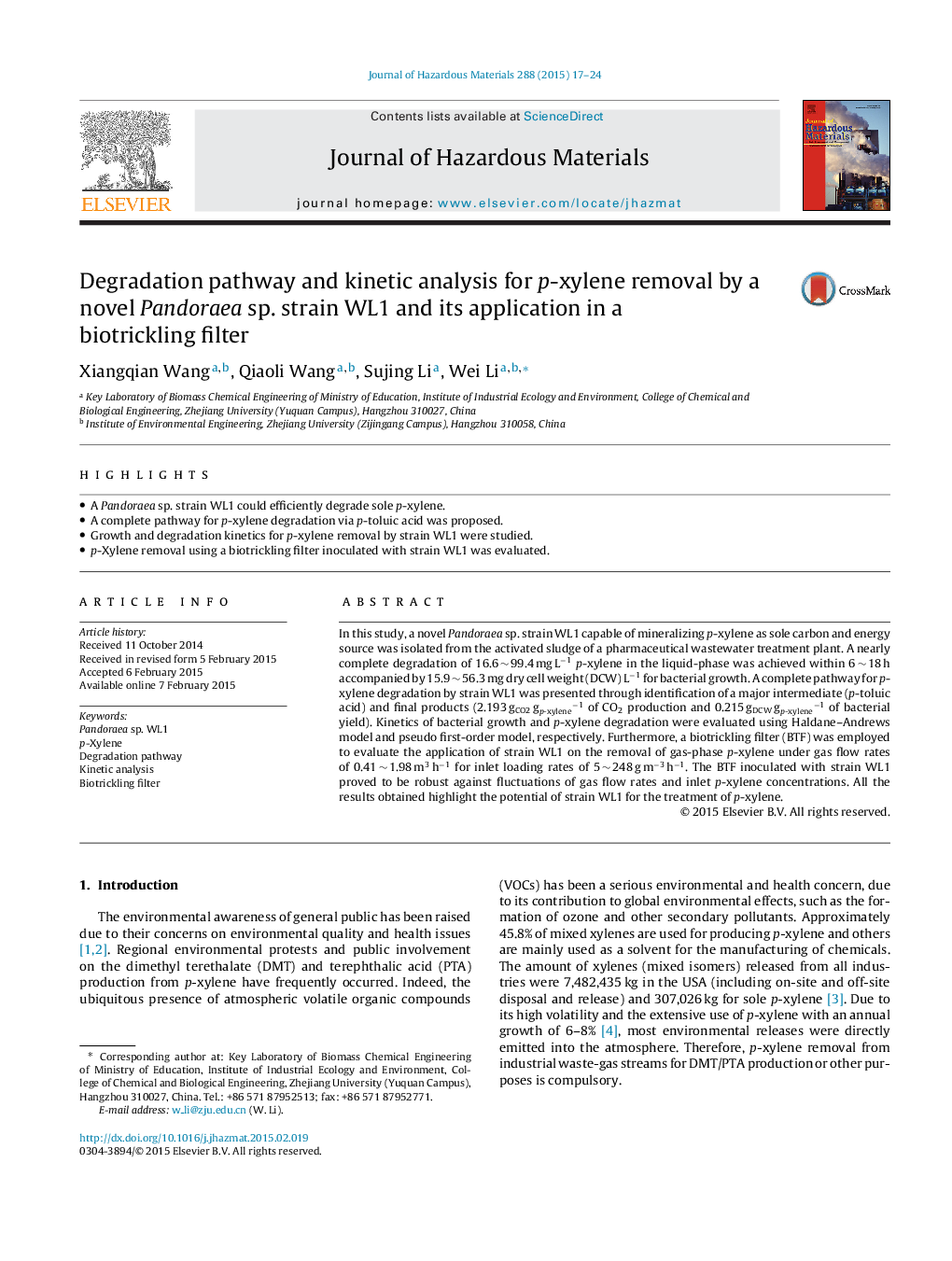| Article ID | Journal | Published Year | Pages | File Type |
|---|---|---|---|---|
| 576086 | Journal of Hazardous Materials | 2015 | 8 Pages |
Abstract
In this study, a novel Pandoraea sp. strain WL1 capable of mineralizing p-xylene as sole carbon and energy source was isolated from the activated sludge of a pharmaceutical wastewater treatment plant. A nearly complete degradation of 16.6 â¼Â 99.4 mg Lâ1p-xylene in the liquid-phase was achieved within 6 â¼Â 18 h accompanied by 15.9 â¼Â 56.3 mg dry cell weight (DCW) Lâ1 for bacterial growth. A complete pathway for p-xylene degradation by strain WL1 was presented through identification of a major intermediate (p-toluic acid) and final products (2.193 gCO2 gp-xyleneâ1 of CO2 production and 0.215 gDCW gp-xyleneâ1 of bacterial yield). Kinetics of bacterial growth and p-xylene degradation were evaluated using Haldane-Andrews model and pseudo first-order model, respectively. Furthermore, a biotrickling filter (BTF) was employed to evaluate the application of strain WL1 on the removal of gas-phase p-xylene under gas flow rates of 0.41 â¼Â 1.98 m3 hâ1 for inlet loading rates of 5 â¼Â 248 g mâ3 hâ1. The BTF inoculated with strain WL1 proved to be robust against fluctuations of gas flow rates and inlet p-xylene concentrations. All the results obtained highlight the potential of strain WL1 for the treatment of p-xylene.
Related Topics
Physical Sciences and Engineering
Chemical Engineering
Chemical Health and Safety
Authors
Xiangqian Wang, Qiaoli Wang, Sujing Li, Wei Li,
